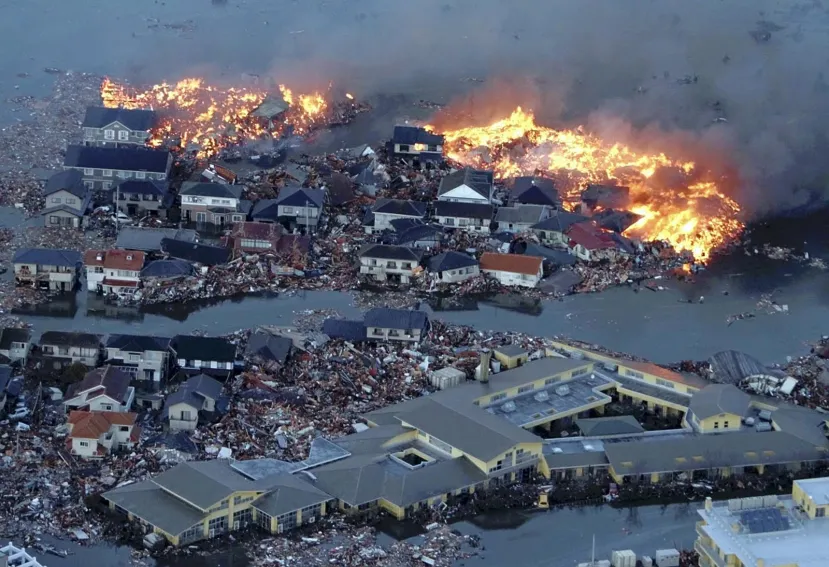
More deflation before inflation in Japan
Japan's devastating natural disaster will keep the economy mired in deflation in coming months.
Before March’s natural disaster, Japan’s gradual economic recovery had seen headline deflati n easing and positive core price inflation seemed imminent. But the destruction from the quake and tsunami has set back the recovery and the economy is facing a new recession. As a result, it will be a slow climb out of deflation for Japan. Reconstruction efforts will strengthen the recovery from the second half of 2011 and could last five years, according to the World Bank. That will help boost price pressures, while the extra demand should also lift consumers’ inflation expectations, a necessary element for a sustainable Japanese recovery.
Entrenched deflation
Data this week show February’s core consumer price index—excluding fresh food—fell 0.3% from a year ago. Advanced Tokyo readings for March point to deflation lingering at the same pace. Even so, other measures such as the "core-core"—excluding food and energy—index are falling at faster pace, suggesting that the deflation problem remains entrenched.
Meanwhile, inflation-indexed bonds on a variety of tenors show markets have priced in worse deflation over the next decade. The devastation caused by the Tohoku earthquake and tsunami will have substantial knock-on effects for domestic prices in coming months.
Supply shock
Japan’s disaster is both a negative supply and demand shock to the economy. On the supply side, port, infrastructure and electricity disruptions hamper firms ability to produce and ship goods. Reduced supply in Japan’s east has already increased prices; electronics prices have spiked following chip shortages.
Electricity and material shortages will limit the ability of businesses in the Greater Tokyo Metropolitan region to conduct normal operations. However, abundant spare capacity across the rest of the country means producers may still have to cut costs and discount prices to sell product.
Demand shock
Most worryingly, the disaster will likely create a new bout of household and business caution, restraining a near-term pickup in private demand. Business sentiment has already weakened, while consumer confidence will struggle in the face of the nuclear disaster and substantial wealth destruction. Japanese households will likely increase precautionary saving, further holding back spending plans.
Japan’s economy had few demand-side price pressures before the quake. The unemployment rate had fallen but not as a result of job growth. Household incomes and consumer demand remained relatively subdued as a result. The disaster has further intensified these problems. The impact of the recent natural disaster on the labour market is unclear, but destroyed factories are likely to see increased layoffs in the near-term.
Rising yen
The strong yen is also stoking deflation pressures by easing the price of imported goods. Haven demand and the prospect of foreign capital inflows to fund rebuilding efforts have driven the currency’s recent surge. Fortunately, coordinated currency intervention from central banks in the G-7 has seen the currency ease from its record-high against the U.S. dollar. Nevertheless, three-month yen futures suggest the currency will hover around its current elevated value of ¥81 against the U.S. dollar.
At this value, the strength of the Japanese currency will help offset the rise in imported commodity price inflation pressures. Japan mostly imports food and energy, which have seen prices strengthen in recent months. Still, heightened global risk aversion and the need for Japanese companies to sell foreign assets and buy yen to help fund reconstruction will keep the currency elevated in the near-term.
Reconstruction boosts longer term inflation pressures
Longer term, inflation is expected to become more of an issue as domestic demand grows and excess capacity is absorbed, causing the output gap to shrink. Reconstruction efforts should drive demand for building and construction workers. The labour market will play a key role in the consumer spending outlook and Japan's exit from its damaging deflation spiral.
Reconstruction spending will also increase demand for building materials and stoke producer price growth. The negative output gap has previously kept producers from passing rising costs on to consumers, but as it shrinks, their ability to lift prices will grow. Home rebuilding and replacement of possessions damaged in the recent disaster should boost durable goods and apparel purchases, placing upward pressure on prices.
The Bank of Japan’s massive liquidity injection into the banking system and expansion of quantitative easing, coupled with an anticipated fiscal response from the government, should also spur inflation pressures. Previous increases in the money supply had little inflation impact since loan demand remained weak. However, funding reconstruction means firms now have a reason to borrow. Meanwhile, as inflation returns and the labour market improves, households should also start to step up loan demand.



















 Advertise
Advertise










